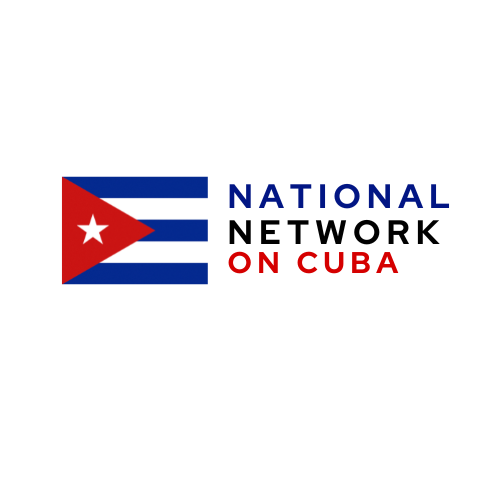Travel Ban
The United States is the only country in the world whose government restricts its citizens from traveling to Cuba. People from the United States are prevented from gaining an understanding of the Cuban revolution through firsthand experience in Cuba with the Cuban people and institutions. In addition to forbidding travel by U.S. citizens to Cuba, the United States also severely limits the opportunity of Cubans to travel to The United States to participate in conferences, educational exchanges, etc. Citizens from both countries are denied the right to exchange ideas and experiences. The policy forbidding normal contact with our neighbors is part of the overall U.S. policy designed to undermine sovereign Cuban nation by imposing an economic blockade, along with terrorism, assassination attempts, and covert warfare. Despite worldwide condemnation and lack of support within the United States this policy continues as law.
The rights of United States nationals to associate with our neighbors have been severely restricted since nearly the triumph of the Cuban revolution in 1959. In 1961 the travel ban was imposed concurrent with the cessation of diplomatic relations between the two countries. While the U.S. government and the Court system have allowed for limited “licensed” travel and for the exchange of information such as books, music, and art; any unregulated individual or group travel and more specifically the spending of money violates U.S. laws. Such “violations” are enforced by the United States Treasury Office of Foreign Assets Control (OFAC) which has the authority to impose fines of up to $7500 for individual travel violations; the so-called trading with the enemy act.
Under the most recent updates, all Cubans can travel abroad to any country including the United States for any reason including tourism, employment, etc. At the same time, the United States continues to demand that its citizens engage in “purposeful travel”, to support civil society in Cuba, and prove that they are engaged in a full-time schedule of educational activities. It is clear that the United States restrictions on the right to travel are blatant abuse of power and hypocritical.
The degree of travel restrictions have fluctuated greatly during the past 50 plus years. What follows is a time line of the restrictions as well as of the challenges to the U.S. policy.
- 1961: U.S. breaks diplomatic relations and restricts travel to Cuba
- 1963: Trading with the Enemy Act further restricts travel
- 1969: Venceremos Brigade formed to challenge U.S. policy by traveling to Cuba and working side by side with Cuban workers.
- 1977: Antonio Maceo Brigade formed by Cuban-Americans to travel to Cuban and maintain ties with family members in Cuba
- 1977: President Jimmy Carter lifts restrictions on travel allowing un-encumbered travel by people in the United States to Cuba. Interest sections opened in DC and Havana as first step to normalizing diplomatic relations.
- 1982: President Ronald Reagan re-imposes travel ban
- 1992: Congress passes the “Cuban Democracy Act”, the Torricelli bill, which imposed further limits on trade, immigration, and bi-lateral and foreign relations.
- 1992: IFCO/Pastors for Peace organizes its first travel challenge and delivers humanitarian assistance to Cuba as a response to the Cuba Democracy Act and in solidarity with Cuba which had just lost its trade relationships with the Socialist Bloc due to the collapse of the Soviet Union.
- 1992: UN General Assembly for the first time supports an end to the United States embargo on Cuba. The vote is 59 in favor, 3 against (the U.S., Israel and Romania), and 79 abstentions.
- 1995: President Bill Clinton eases restrictions on people-to-people travel
- 1996: President Clinton signs the Helms/Burton Act; the Cuban Liberty and Democratic Solidarity (Libertad) Act which imposes penalties on foreign companies doing business in Cuba, permits U.S. citizens to sue foreign investors who make use of American-owned property seized by the Cuban government, and denies entry into the U.S. to such foreign investors.
- 2003: President George W. Bush establishes the Committee for Assistance to a Free Cuba, and further enforces the ban on travel to the island, and imposes new restrictions on family visits to Cuba limiting them to once every three years and re-defining ”family” to exclude most relatives. All travel for people-to-people exchanges are eliminated. Academic research is only allowed for entire semester full time studies.
- 2009: President Obama eliminates restrictions on family travel and remittances.
- 2011: President Obama eases restrictions to allow for “purposeful travel” related to religious, educational and people-to-people exchanges; allows the sending of remittances to non-family members, and expands the permission of airports to provide charter flights to Cuba.
- 2013: Cuba institutes immigration reforms allowing all its citizens to travel abroad for any reason as long as they are issued a visa by the country to which they are traveling.
- 2013: UN General Assembly for the 22nd time votes to end the Unites States embargo on Cuba. The vote is 182 in favor, 2 against (United States and Israel), and 3 abstentions.
[button] Top Page[/button]


